Artificial intelligence is no longer just a buzzword or a technology of the future—it’s a critical tool that enterprises are leveraging today to scale operations, enhance customer experiences, and drive innovation. As organizations face increasing pressure to do more with less, AI offers a path to sustainable growth without proportional increases in headcount or operational costs. This article explores how forward-thinking enterprises use AI to scale across departments, from customer service to logistics, with real-world examples and actionable implementation strategies.
The Enterprise AI Transformation: Beyond the Hype
Enterprise AI adoption has evolved from experimental projects to mission-critical implementations. According to recent research, organizations that strategically implement AI see an average return of $3.70 for every $1 invested. But the true value goes beyond cost savings—AI enables enterprises to scale operations in ways previously impossible, creating new capabilities and competitive advantages.
The most successful AI implementations share common characteristics: they address specific business challenges, integrate seamlessly with existing workflows, and focus on augmenting human capabilities rather than replacing them. This approach allows enterprises to scale intelligently, focusing human resources on high-value activities while automating routine tasks.
Key Insight: Enterprise AI adoption is accelerating, with more than 85% of Fortune 500 companies now using AI solutions to shape their future. The most successful implementations focus on four key business outcomes: enriching employee experiences, reinventing customer engagement, reshaping business processes, and accelerating innovation.
AI in Customer Service: Reducing Response Times by 40%
Customer service represents one of the most mature and impactful areas for AI implementation. Enterprises are using AI to scale support operations without sacrificing quality, enabling 24/7 service while reducing costs and improving customer satisfaction.
How AI Transforms Customer Service Operations
Modern AI-powered customer service solutions go far beyond basic chatbots. Today’s implementations use natural language processing to understand customer intent, sentiment analysis to gauge emotional states, and machine learning to continuously improve responses based on feedback and outcomes.
These capabilities allow enterprises to handle increasing volumes of customer inquiries without proportional increases in support staff. More importantly, they enable consistent service quality across channels and time zones, ensuring customers receive timely, accurate responses regardless of when or how they reach out.

Real-World Example: Telkomsel’s AI-Powered Virtual Assistant
Indonesian telecommunications giant Telkomsel created a virtual assistant using Azure OpenAI Service that transformed their customer service operations. The implementation resulted in:
- An increase in customer self-service interactions from 19% to 45%
- A reduction in call volume from 8,000 calls to 1,000 calls per day
- Improved customer satisfaction scores across digital channels
- Freed up human agents to handle complex issues requiring empathy and judgment
The key to Telkomsel’s success was their approach to implementation. Rather than replacing human agents, they focused on augmenting their capabilities and handling routine inquiries automatically, allowing human agents to focus on complex cases that benefit from a personal touch.
Enhance Your Customer Service with AI
Discover how your enterprise can implement AI-powered customer service solutions to reduce response times and improve satisfaction.
Smart Logistics: Predictive Delivery Routing and Inventory Management
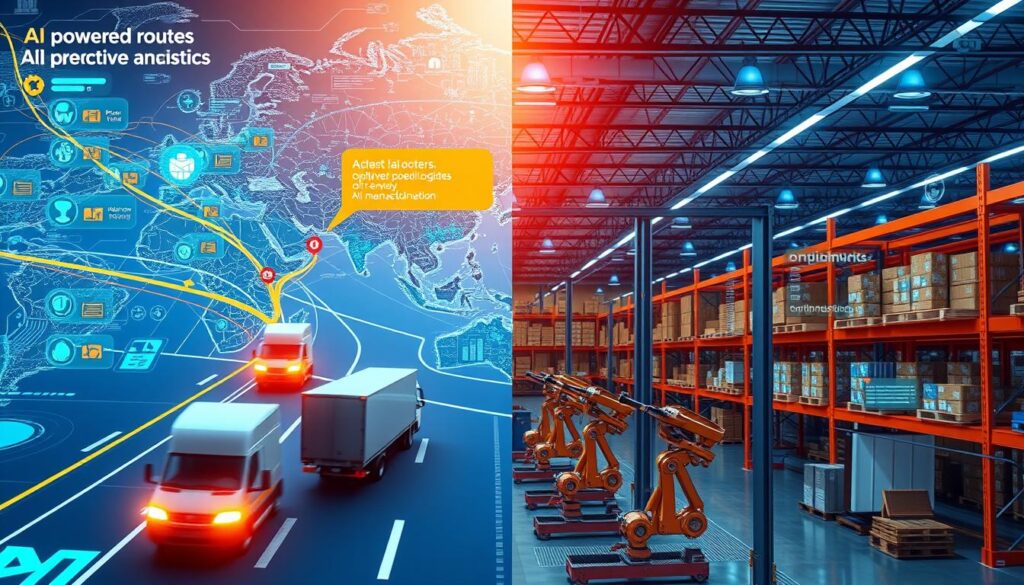
Logistics and supply chain operations present enormous opportunities for AI-driven scaling. By implementing machine learning algorithms and predictive analytics, enterprises can optimize routing, forecast demand with greater accuracy, and manage inventory levels more efficiently.
Key AI Applications in Enterprise Logistics
Predictive Routing
AI algorithms analyze historical delivery data, traffic patterns, weather conditions, and other variables to optimize delivery routes in real-time, reducing fuel costs and improving on-time delivery rates.
Demand Forecasting
Machine learning models analyze historical sales data, market trends, seasonal patterns, and external factors to predict future demand with greater accuracy, reducing both stockouts and excess inventory.
Warehouse Automation
AI-powered robots and computer vision systems automate picking, packing, and inventory management, increasing throughput while reducing error rates and labor costs.
Real-World Example: C.H. Robinson’s AI-Powered Logistics Platform
Global logistics provider C.H. Robinson used Azure AI Studio and Azure OpenAI Service to build generative AI tools that revolutionized their operations. Their implementation:
- Automated customer request processing, reducing response time from hours to seconds
- Improved productivity by 15% across logistics operations
- Enhanced customer service through faster, more accurate responses
- Optimized routing decisions based on real-time data analysis
The company’s approach focused on augmenting human decision-making rather than replacing it entirely. Their AI tools provide recommendations and automate routine tasks, while experienced logistics professionals maintain oversight and handle exceptions that require human judgment.
“We’re always looking at ways to enable groups to get their models into production faster, but in a secure, governed fashion.”
AI in Human Resources: Streamlining Recruitment and Employee Development
Human resources departments are leveraging AI to scale their operations, from recruitment and onboarding to employee development and retention. These implementations allow HR teams to handle growing workforces without proportional increases in administrative overhead.
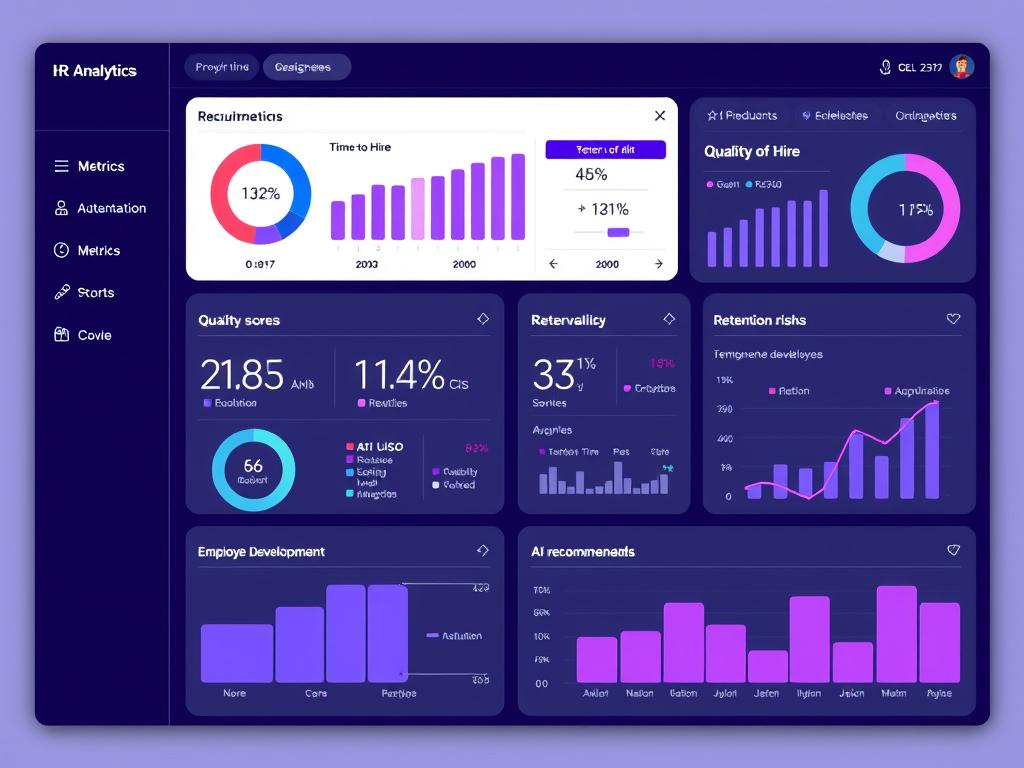
How AI Transforms HR Operations
AI applications in HR go far beyond simple automation. Today’s implementations use natural language processing to screen resumes, predictive analytics to identify flight risks, and recommendation engines to suggest personalized development opportunities.
These capabilities allow HR departments to scale their impact without growing their teams proportionally. More importantly, they enable more strategic, data-driven approaches to talent management that improve both employee experience and business outcomes.
Real-World Example: PageGroup’s AI-Powered Recruitment Solution
Global recruitment firm PageGroup implemented Azure OpenAI Service to develop tools that help consultants create job postings and advertisements more efficiently. Their implementation:
- Reduced content creation time by up to 75% per consultant
- Improved job posting quality and consistency
- Allowed consultants to focus on candidate relationships rather than administrative tasks
- Scaled recruitment operations without proportional increases in staff
PageGroup’s approach focused on augmenting their consultants’ capabilities rather than replacing their expertise. The AI tools handle routine content creation while consultants focus on the human elements of recruitment that benefit from personal attention and judgment.
Implementation Tip: When implementing AI in HR, start with well-defined use cases that have clear metrics for success. Focus on areas with high administrative burden but low need for human judgment, such as initial resume screening or standard communication generation.
Transform Your HR Operations with AI
Learn how your enterprise can implement AI-powered HR solutions to streamline recruitment and enhance employee development.
AI-Powered Marketing: Personalization at Scale
Marketing departments are using AI to deliver personalized experiences to thousands or millions of customers simultaneously—something that would be impossible with traditional approaches. These implementations allow marketing teams to scale their impact without proportional increases in staff or budget.
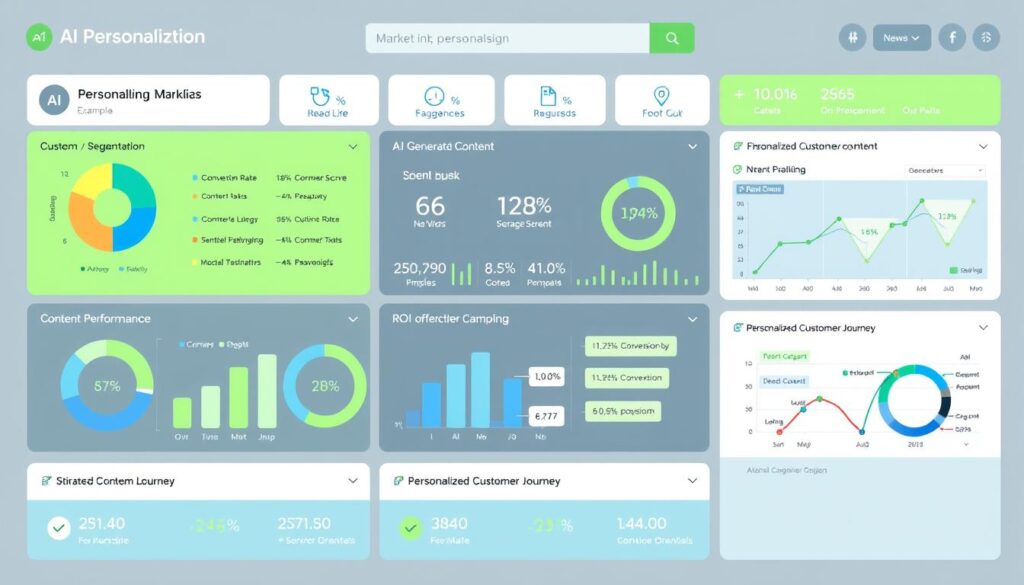
How AI Transforms Marketing Operations
Modern AI-powered marketing solutions use machine learning to analyze customer data, predict preferences, and deliver personalized content and offers at scale. These capabilities enable marketers to:
- Create dynamic content that adapts to individual customer preferences
- Optimize campaign timing based on individual engagement patterns
- Predict customer lifetime value and allocate resources accordingly
- Automate content creation and optimization across channels
Real-World Example: Estée Lauder’s AI-Powered Personalization
Global beauty company Estée Lauder is leveraging Azure OpenAI Service to create closer consumer connections and increase speed to market with local relevancy. Their implementation:
- Delivers personalized product recommendations based on individual preferences
- Creates localized marketing content that resonates with different markets
- Optimizes campaign timing and channel selection for maximum impact
- Scales personalization capabilities across global markets
The company’s approach focuses on using AI to enhance human creativity rather than replace it. Their AI tools handle data analysis and content optimization, while human marketers focus on strategy and creative direction.
“The power of AI is incredible, and I think it’s always worth focusing on the positive. Usually fear around new technology is driven by lack of understanding. It’s important to remember that we are in control and we should stay in control. AI can help us. We can stand on it to see further, to do more, to be quicker.”
Actionable Strategies for Implementing AI Without Disrupting Workflows
Implementing AI tools effectively requires a strategic approach that balances innovation with practical considerations. The following strategies can help enterprises implement AI solutions that scale operations without disrupting existing workflows.
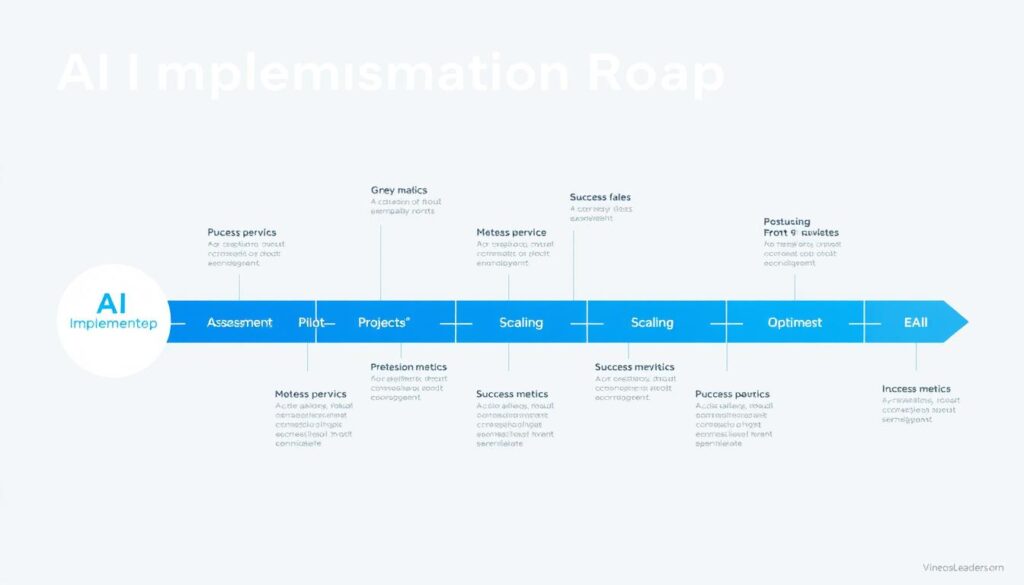
1. Start with High-Value, Low-Complexity Use Cases
Begin your AI implementation journey with use cases that offer significant value but relatively low implementation complexity. This approach allows you to demonstrate quick wins while building organizational capabilities and confidence.
Recommended First Steps:
- Automate routine customer inquiries with AI chatbots
- Implement predictive maintenance for critical equipment
- Use AI for document processing and data extraction
- Deploy sentiment analysis for customer feedback
Implementation Approach:
- Define clear success metrics before implementation
- Start with a limited scope and expand gradually
- Ensure integration with existing systems
- Provide adequate training for affected teams
2. Adopt an Augmentation Mindset Rather Than Replacement
The most successful AI implementations focus on augmenting human capabilities rather than replacing them entirely. This approach not only reduces resistance but often leads to better outcomes by combining AI efficiency with human judgment and creativity.
“If you’re a data leader, think about the things your teams are being asked for the most, and how AI could make life easier for those lines of business. Where can they infuse AI to help make decisions, create better workflows and processes, or provide information to the business that drives forward thinking?”
For example, in customer service, AI can handle routine inquiries and provide agents with real-time recommendations, allowing them to focus on complex cases that benefit from human empathy and judgment. This approach improves both efficiency and service quality while maintaining the human touch that customers value.
3. Implement MLOps for Sustainable AI Management
Machine Learning Operations (MLOps) provides a framework for managing AI models throughout their lifecycle, from development to deployment and monitoring. This approach ensures that AI implementations remain effective, secure, and compliant over time.
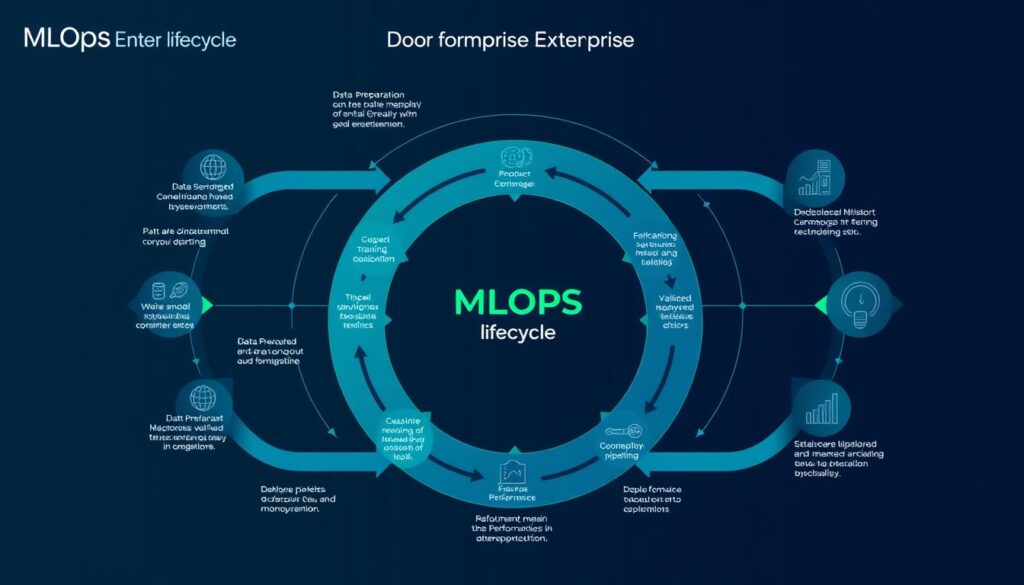
Key elements of an effective MLOps approach include:
- Automated testing and validation of models before deployment
- Continuous monitoring of model performance and drift
- Version control for both data and models
- Automated retraining and deployment processes
- Comprehensive documentation and governance
As one data leader explained: “We have our MLOps constantly checking the quality, testing the quality of our predictions and the quality of our ML. We have a whole series of dashboards which report to the senior management team where we can see the quality and the predictive power of those models. And if we see a drop-off during the course of a month, we will unpack our machine learning programs, and look at the data sources, to see why they’re not working.”
4. Focus on Data Quality and Governance
The effectiveness of AI implementations depends heavily on the quality and governance of the underlying data. Enterprises must ensure that their data is accurate, complete, relevant, and properly governed to achieve reliable results.
Critical Consideration: More than half of organizations cite data as the culprit for AI projects stalling. A modern data architecture like a data fabric provides built-in data quality and data governance capabilities, enabling successful AI scaling.
Key strategies for ensuring data quality and governance include:
- Implementing data quality monitoring and remediation processes
- Establishing clear data ownership and stewardship
- Developing comprehensive metadata management
- Ensuring compliance with relevant regulations and policies
- Creating a data catalog for discovery and understanding
5. Build Cross-Functional Implementation Teams
Successful AI implementations require collaboration across functions, combining technical expertise with domain knowledge and change management capabilities. Cross-functional teams ensure that implementations address real business needs and integrate effectively with existing processes.
An effective cross-functional AI implementation team typically includes:
Technical Roles
- Data Scientists
- Machine Learning Engineers
- Data Engineers
- IT Integration Specialists
Business Roles
- Domain Experts
- Process Owners
- Business Analysts
- Executive Sponsors
Support Roles
- Change Management Specialists
- Training Coordinators
- Legal/Compliance Advisors
- UX/UI Designers
Assess Your Enterprise’s AI Readiness
Discover where your organization stands on the AI implementation journey and identify your next steps for scaling with AI.
Measuring Success: KPIs for AI-Driven Scaling
Measuring the impact of AI implementations is essential for justifying investments and guiding ongoing optimization. Effective measurement requires a combination of technical, operational, and business metrics that capture the full value of AI-driven scaling.
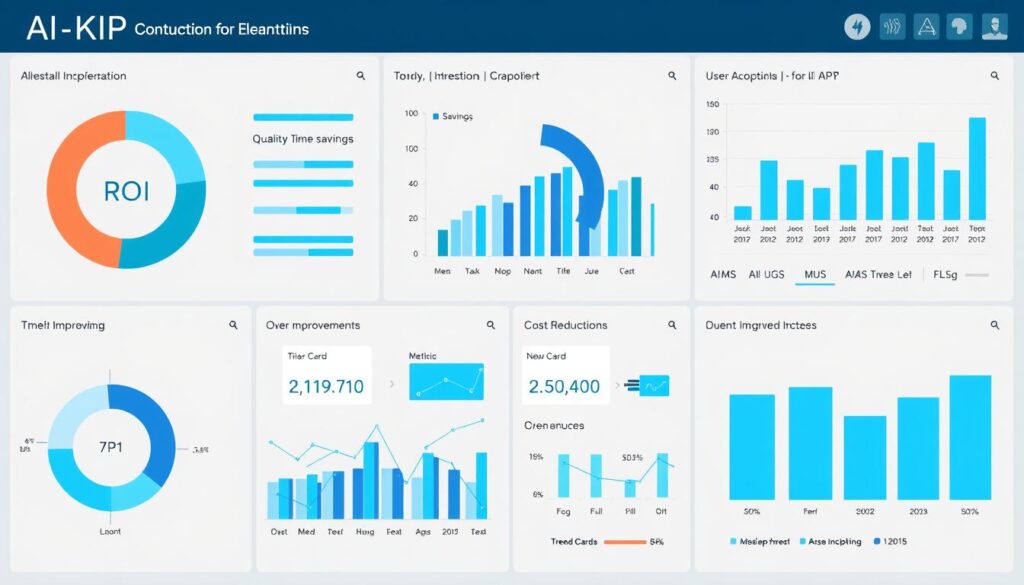
Key Performance Indicators by Function
| Function | Efficiency Metrics | Quality Metrics | Business Impact Metrics |
| Customer Service |
– Average handling time – First contact resolution rate – Queries per agent |
– Customer satisfaction score – Net Promoter Score – Accuracy of responses |
– Customer retention rate – Upsell/cross-sell conversion – Support cost per customer |
| Logistics |
– Delivery time – Warehouse throughput – Inventory turns |
– On-time delivery rate – Order accuracy – Inventory accuracy |
– Logistics cost as % of revenue – Working capital reduction – Customer satisfaction |
| Human Resources |
– Time-to-hire – HR staff-to-employee ratio – Onboarding completion time |
– Quality of hire – Employee satisfaction – Training effectiveness |
– Employee retention rate – Productivity per employee – Recruitment cost savings |
| Marketing |
– Campaign creation time – Content production rate – Lead processing time |
– Engagement rates – Conversion rates – Content relevance scores |
– Customer acquisition cost – Marketing ROI – Revenue attribution |
Holistic Measurement Approach
Beyond function-specific metrics, enterprises should measure the overall impact of AI implementations on their scaling capabilities. Key holistic metrics include:
- Scaling Efficiency Ratio: Revenue growth divided by headcount growth, measuring the ability to scale without proportional increases in staff
- AI ROI: Total value created (cost savings plus revenue increases) divided by total investment in AI implementation
- Time-to-Value: Time from implementation start to measurable business impact
- Innovation Rate: Number of new products, services, or features enabled by AI capabilities
- Organizational AI Maturity: Assessment of AI capabilities, governance, and integration across the enterprise
Measurement Best Practice: Establish baseline measurements before implementation and track changes over time. Use both leading indicators (predictive of future success) and lagging indicators (confirming past success) to get a complete picture of impact.
Challenges and Ethical Considerations
While AI offers tremendous potential for scaling enterprise operations, implementation comes with significant challenges and ethical considerations that must be addressed proactively. Organizations that navigate these issues effectively position themselves for sustainable, responsible scaling.
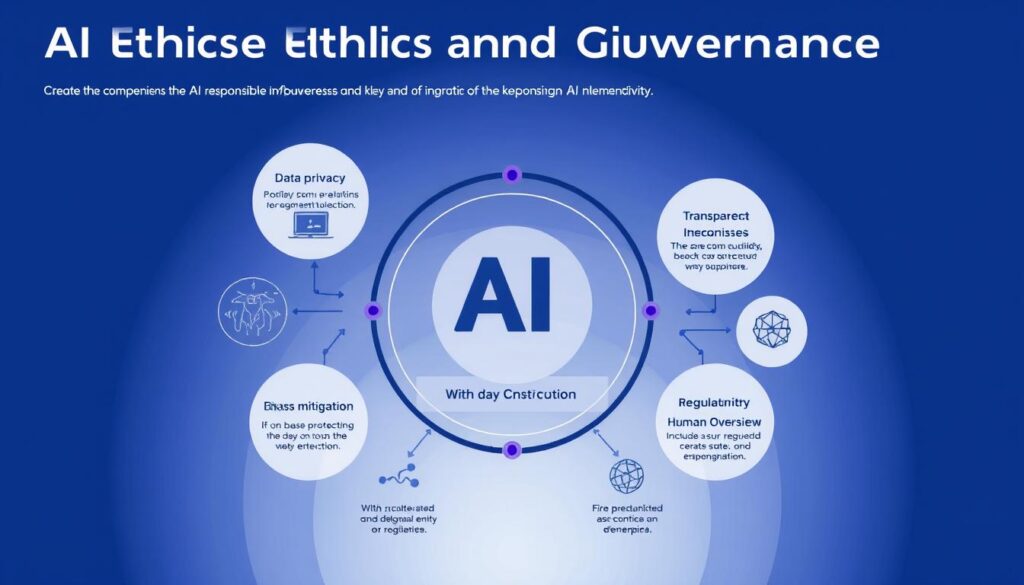
Implementation Challenges
Technical Challenges
- Data Quality and Integration: Ensuring data is accurate, complete, and accessible across systems
- Legacy System Integration: Connecting AI solutions with existing enterprise systems
- Model Drift and Maintenance: Keeping AI models accurate as conditions change
- Scalability: Ensuring solutions can handle enterprise-scale data and transactions
Organizational Challenges
- Skill Gaps: Finding and developing talent with necessary AI expertise
- Change Management: Helping employees adapt to new AI-enabled workflows
- Governance: Establishing appropriate oversight and responsibility
- ROI Justification: Demonstrating value to secure ongoing investment
Ethical Considerations
As enterprises scale with AI, they must address important ethical considerations to ensure responsible implementation. Key areas of focus include:
Data Privacy and Security
AI systems often require access to sensitive data, raising important privacy and security concerns. Enterprises must implement robust data protection measures, ensure compliance with regulations like GDPR and CCPA, and maintain transparency about data usage.
Bias and Fairness
AI systems can perpetuate or amplify biases present in training data or algorithms. Organizations must proactively identify and mitigate bias, ensure fairness across different groups, and regularly audit systems for unexpected discriminatory effects.
Transparency and Explainability
Many AI systems operate as “black boxes,” making decisions that are difficult to explain. Enterprises should prioritize explainable AI approaches, especially for high-stakes decisions, and ensure human oversight of critical AI-driven processes.
Workforce Adaptation
As AI automates certain tasks, enterprises must help their workforce adapt to changing roles and develop new skills. Successful approaches include:
- Reskilling Programs: Providing training for employees to develop AI-related skills and capabilities
- Role Redesign: Reimagining jobs to focus on tasks where humans add unique value
- Change Communication: Clearly explaining how AI will impact roles and the opportunities it creates
- Inclusive Implementation: Involving employees in the design and deployment of AI solutions
“Organizations face severe risks to their brand reputation if their AI models are biased or unexplainable. They could also face government audits and millions in fines for failing to meet complex and changing regulatory requirements. All these issues can have a devastating impact on shareholder and customer relationships.”
Building an Ethical AI Framework
To address these challenges effectively, enterprises should develop a comprehensive ethical AI framework that guides implementation across the organization. Key components include:
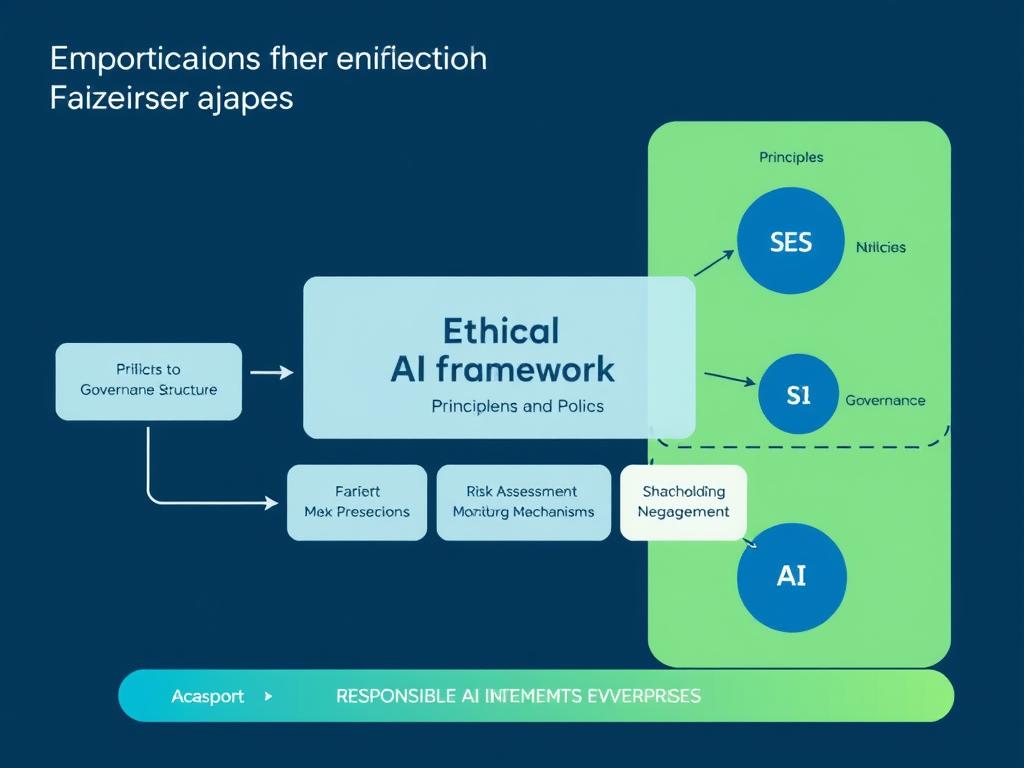
- Clear Principles and Policies: Establishing guidelines for responsible AI development and use
- Governance Structure: Defining roles and responsibilities for AI oversight
- Risk Assessment Process: Systematically evaluating potential ethical risks before implementation
- Monitoring and Auditing: Regularly reviewing AI systems for unexpected behaviors or impacts
- Stakeholder Engagement: Involving customers, employees, and other stakeholders in AI governance
Develop Your Ethical AI Framework
Get expert guidance on building a comprehensive ethical AI framework tailored to your enterprise’s needs and values.
Conclusion: The Future of Enterprise AI Scaling
As AI technologies continue to evolve, their potential for enabling enterprise scaling will only increase. Organizations that develop strong AI capabilities today position themselves for sustainable growth and competitive advantage in an increasingly digital business environment.
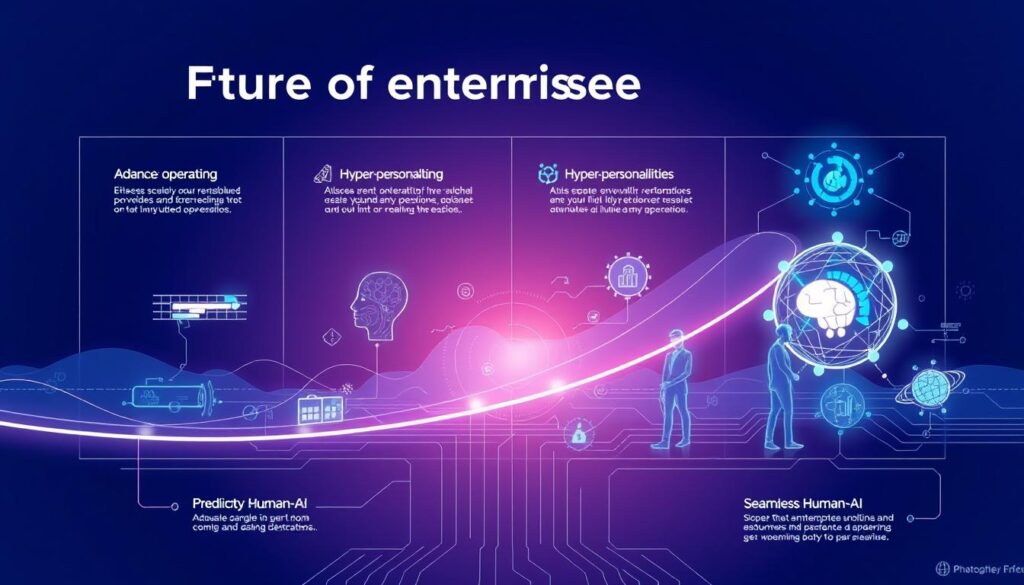
The most successful enterprises will approach AI implementation strategically, focusing on specific business outcomes rather than technology for its own sake. They will build robust data foundations, develop appropriate governance frameworks, and foster cultures that embrace AI-enabled transformation.
By starting with high-value use cases, measuring impact rigorously, and addressing ethical considerations proactively, enterprises can use AI to scale operations efficiently while maintaining quality and building customer trust. The result will be organizations that can grow and adapt more quickly than their competitors, delivering better experiences for both customers and employees.
“AI is no longer a choice; it’s an imperative. While there can be trepidation or hesitation around the impact of AI, it’s important to remember that we are in control and we should stay in control. AI can help us. We can stand on it to see further, to do more, to be quicker. And when we get that combination right and people understand that part, that’s when we can do some fantastic things.”
Start Your Enterprise AI Scaling Journey
Discover how our team of AI implementation experts can help your enterprise scale operations efficiently with customized AI solutions.
Additional Resources
Guides and Whitepapers
Case Studies
Stay Updated on Enterprise AI Trends
Subscribe to our newsletter for the latest insights, case studies, and best practices on using AI to scale enterprise operations.







